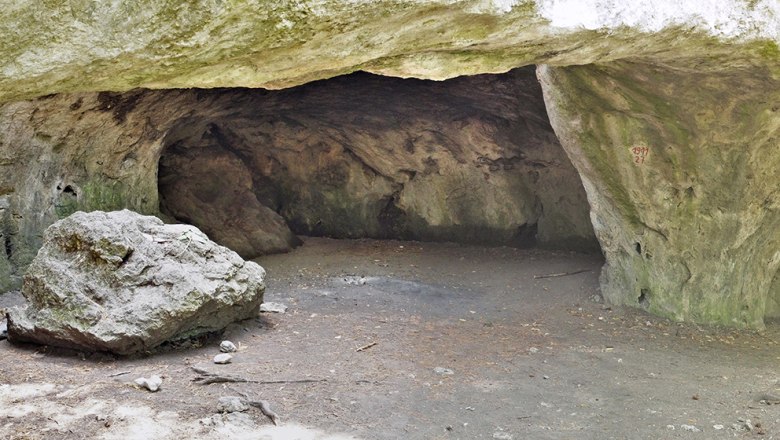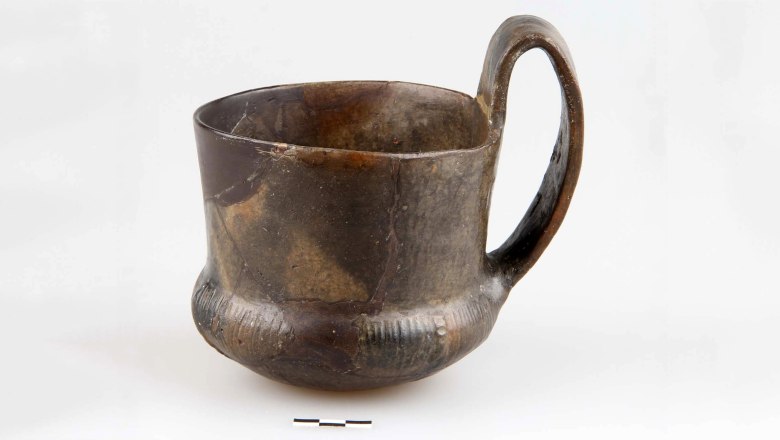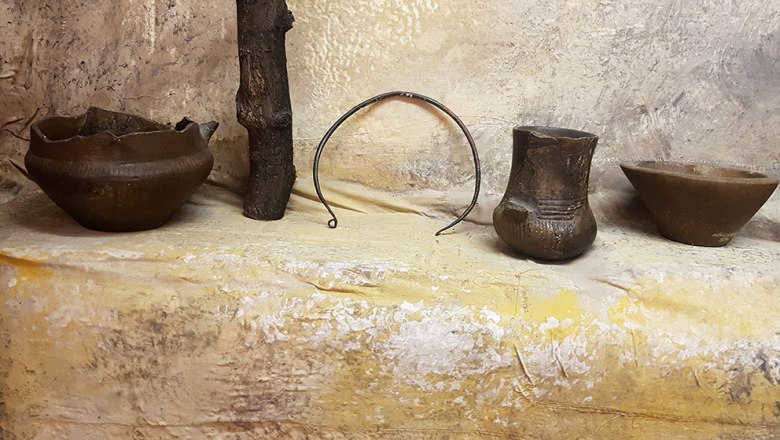Neolithic pottery in the Königshöhle in Baden
Historical sites
Description
The finds made in the Königshöhle cave in Baden led to a specific Neolithic pottery style being named after the site: the "Baden culture".
Numerous ceramic vessels, tools and pieces of jewelry from the Neolithic and Early Bronze Age were unearthed in the Königshöhle cave near the Rauheneck ruins. They tell us that the cave was used repeatedly around 7,000 to 3,500 years ago, perhaps as a shelter for shepherds, for residential purposes or for holding rituals.
The history of the find
The local historian Gustav Calliano from Baden excavated the archaeological site almost completely in January 1892 and interpreted it with great imagination. He thought he had found the remains of a cave bear in front of the cave. He interpreted the cave itself as a "kiln for clay vessels" due to the numerous pottery shards. This interpretation is not correct from the point of view of modern research, but illustrates the large number of finds. Due to their significance, they were even given the name of a specific style of pottery - the "Baden culture", which was particularly widespread in Hungary and eastern Austria in the 4th millennium BC. Jugs with raised band handles and decoration with shallow grooves are typical.
Who used the cave?
As people at that time mostly lived in wooden houses and not in caves, the King's Cave may have had a special function in the Neolithic period. If there were no permanent buildings here in some phases, it was most likely a temporary camp site for shepherds, accommodation for people who lived outside the usual villages or a place of worship. It is also conceivable that it was used for cremation burials, as a high-quality decorative object, a copper necklace, was discovered from the Baden culture period.
Finds from the early Neolithic to the Roman period
In addition to objects from the Baden culture, pottery from other periods and cultural groups was also discovered, e.g. from the late Early Neolithic, the Epilengyel, the early Late Neolithic and the Early Bronze Age Leitha group and Litzen ceramics. The Romans also left some coins on the cave floor thousands of years later - perhaps they also used the cave as a resting place or for a cult.
Tip: Some finds from the Königshöhle cave are on display at the Rollettmuseum Baden.



